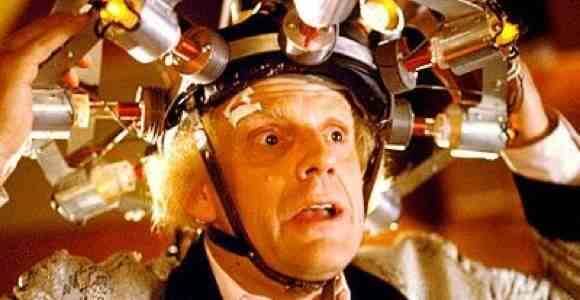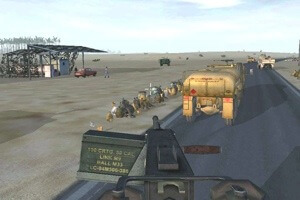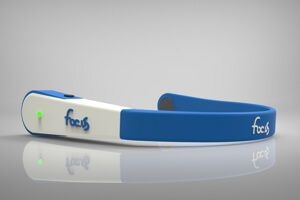
Want to be smarter, solve difficult puzzles, learn the piano in half the time? All you need is a little shock. A growing number of scientists are claiming that passing a small current through the brain increases our aptitude. One need only to strap on the headgear, press the button, and sit back while mediocrity is zapped from your brain.
The ‘miracle’ boost is supposedly delivered through what’s called transcranial direct current stimulation (tDCS). The stimulation is a steady current of 2 milli-amps – about the same as a 9-volt battery – delivered through electrodes worn on the head and arm. The mild electric current is enough to depolarize neurons in the cerebral cortex and supposedly make it more receptive to new input. That is, the brain is primed to learn more easily.
At first blush this might sound more like psuedoscience than science. But several studies have shown that people learn faster with the battery strapped to their heads, giving new meaning to getting “the juices flowing.”
Last year scientists at the Mind Research Network in Albuquerque, New Mexico tested the ability of tDCS to improve people’s performance on a threat identification task. Participants were trained on the virtual reality simulation DARWARS AMBUSH! that the US military uses to train soldiers how to recognize and react to enemy ambushes and improvised explosive devices (IEDs). A baseline performance level was assessed, followed by a 1-hour training session, then a post-training test session in which participants were asked whether or not a threat was present. One group of participants received 2 mA tDCS for the first half and hour of the training session while another group received a meager 0.1 mA dose as a negative control.
Turns out that tDCS enhances training. The high dose group performed better at threat identification than the the group with the low dose. The enhanced performance is also accompanied by an altered state of awareness. “The number one thing I hear people say after tDCS is that time passed unduly fast,” lead scientist of the study, Michael Weisend, told New Scientist. They feel more focused and calm, he says, and their performance certainly makes it seem as though they were.
Previous studies show similar results. A 2005 study showed tDCS improved working memory, and a 2008 study showed tDCS improved language learning. A third study published earlier this year showed that tDCS delivered to the parietal cortex, a part of the brain through which visual information flows, enhanced visual short-term memory compared to placebo.
So if the effects are real, what are the 2 mA of current doing to the brain? Weisend and colleagues have tried to answer that question with brain imaging.
The brain’s magnetic field changes in response to sensory stimulation such as with sound, touch and light. With magnetoencelography (MEG) Weisend’s group showed that response magnetic fields of individuals who had received tDCS had amplitudes six times greater than baseline amplitudes. By contrast, individuals who had received a mock tDCS that gave the same sensation (it tingles) showed no boost over baseline. Furthermore, the tDCS group still showed a 2.5-fold boost in their magnetic fields 50 minutes after stimulation.
Trying to uncover anatomical changes, the group then conducted a study using diffusion tensor imaging (DTI) scans that can visualize the white matter fiber tracts connecting different parts of the brain. DTI showed clear changes in brain structure only five days following stimulation. White matter nerve fiber tracts were “more robust and more highly organized” in the hemisphere which had received tDCS. In contrast, the side of the brain that did not receive stimulation showed no structural changes in the white matter.
Anyone who pays attention to the neuroscience of cognitive performance research might be reminded of the studies that tried to unlock they mystery of “the zone,” that Zen-like mental state that athletes seem to achieve for a time to elevate their performance head and shoulders above their peers. Except it wasn’t called the zone back in the seventies when the research began. It was called the similarly enigmatic “flow.”
The Hungarian psychologist and pioneer into “flow” research, Mihaly Csikszentmihalyi, performed EEG brain recordings on world class chess players engaged in a game. The recordings showed decreased activity in the prefrontal cortex, the part of the brain nicknamed the “CEO of the brain” for its role in higher cognitive processes such as analysis and abstract thought. Csikszentmihalyi surmised that the decreased prefrontal activity during high level chess play suppressed self doubt and allowed a more unguarded, automatic type of performance.
More recently, in 2010, Chris Berka, co-founder of Advanced Brain Monitoring performed EEG scans on professional golfers and Olympic archers. The scans showed that, in the moments before hitting a golf ball or firing off an arrow, the athletes’ brains produced more alpha waves. The alpha waves are produced by the aggregate activity of all the brain’s neurons. Alpha waves have also been shown to be associated with decreased activity in the cortex so that, as Csikszentmihalyi thought, distracting thoughts could be tamped down to make way for physical command made intuitive through extensive practice. “We think this represents focused attention on the target, while other sensory inputs are suppressed,” Berka told the New Scientist. The alpha spike was more pronounced in experts compared to novices as if the longterm nurturing of the high-performance alpha waves yield more reward when uncovered. One might think it the brain scan imagery for Timothy Gallwey’s “The Inner Game of Tennis.”
No matter what it’s called, it should come as no surprise that companies are already straining their own intellect to find ways to market devices that unleash our mental potential between a pair of electrical leads. The Focus v1 is a transcranial direct current stimulator that looks like a headband. Worn above the temples, the v1 delivers 2 mA of tDCS current for “enhanced concentration.” tDCS – or the Focus v1 – is not recognized by the FDA as a treatment and thus is not available in the US. But the v1 appears to be available outside the US.
So, with tDCS, will psychologist Anders Ericsson’s 10,000 hour rule, that asserts as many hours of practice is required before expertise is achieved, need to be revised? New version: 10,000 hours, or 5,000 with a steady flow of 2 mA current flowing through your skull.
While not yet approved by the FDA, the US Air Force is certainly giving tDCS its stamp of approval. At this year’s Society for Neuroscience meeting, Air Force Research Laboratory scientists reported that they’ve been using tDCS to cut down on the time needed to train drone pilots how to identify targets in radar images. Apparently training pilots to pick out targets within the complex images is a major rate-limiting step in being able to deploy the attack drones. As with the DARWARS AMBUSH! simulation training, performance improved with just 30 minutes of 2 mA stimulation. And not only did the tDCS help pilots learn faster, they retained their new skills longer too. Target identification accuracy typically drops at 20 minutes after training. Pilots who had trained with tDCS retained high accuracy up to 40 minutes after training.
The number of studies that explore the cognitive effects of tDCS is still admittedly low. And it is certainly possible that the 2 mA current flowing through the cortex doesn’t rewire the brain to think better or make our neurons more receptive to input. It could just be, Ramon y Cajal forbid, that zapping your brain just makes you more alert because, well, it kinda hurts. Coffee enhances our cognitive prowess by making us more alert (and as long as we’re careful, without the hurt). Could the secret of tDCS be that simple? Where there’s a possible breakthrough – and a possible market – brain researchers and companies are sure to go. My guess is that if the explanation has more to do with attentiveness than acumen, the researchers will be disappointed. The companies, not so much.

